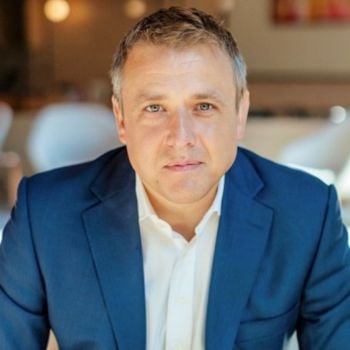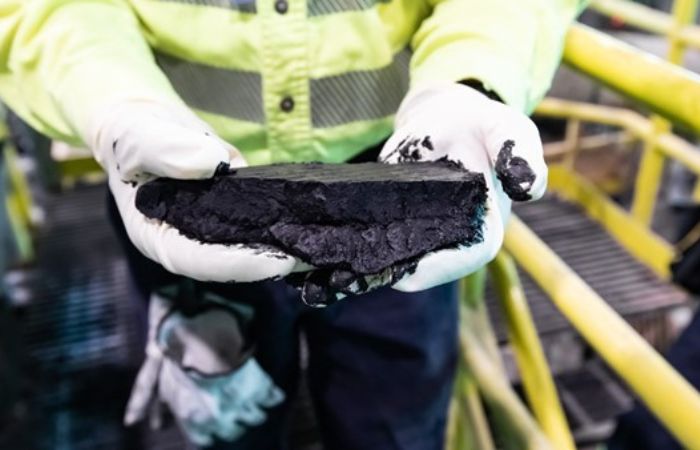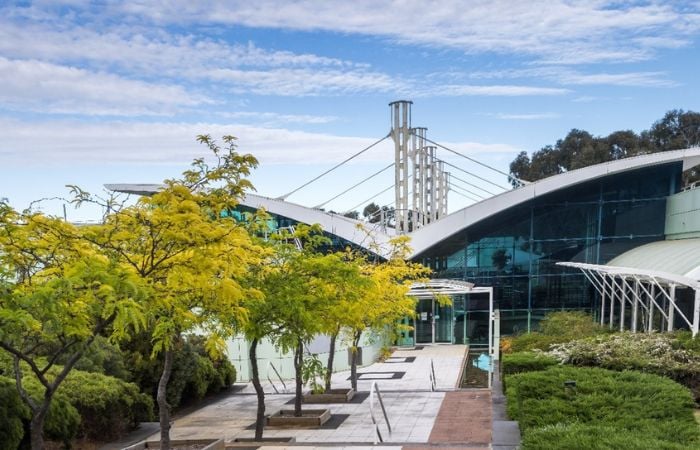Demand for critical minerals: Global energy transition brings opportunities
Dan Walker, Chief Innovation Officer at Rio Tinto, says the energy transition is undoubtedly one of the greatest challenges of our time. The surge in demand for critical minerals, essential to this shift, presents both significant opportunities and complex challenges for the mining industry. He believes collaboration is the key to unlocking these minerals’ potential and addressing the challenges ahead.

Dan Walker, Rio Tinto’s Chief Innovation Officer, leads the company’s global R&D and corporate venture capital efforts, driving innovation to accelerate the energy transition and deliver transformational value, with a career that spans academia, energy, and natural resources.
Rio Tinto has evolved significantly since its origins as a Spanish copper mine in 1873. Today, we're a global leader in mining, producing a diverse range of commodities essential for modern life. My role as Chief Innovation Officer is to search the world for the most innovative technologies and ideas that can shape the future of sustainable mining.
The energy transition is undoubtedly one of the greatest challenges of our time. The demand for critical minerals, essential for technologies like renewable energy and electric vehicles, is skyrocketing. This presents both immense opportunities and complexities for the mining industry.
Investing in future materials
At Rio Tinto, we’re committed to leading the charge. We’re investing heavily in Research & Development (R&D) to find innovative ways to extract and process critical minerals while minimising our impact. To accelerate innovation, we’ve established the Rio Tinto Centre for Future Materials in partnership with Imperial College London, UK.
This centre is dedicated to identifying and addressing critical global challenges in materials science. By collaborating with leading academic institutions worldwide, we're investing $150 million over 10 years to fund groundbreaking research that will transform how we extract, process and use vital materials.
Bringing the best outside minds in
Another step we’ve taken is to establish an Innovation Advisory Committee. Comprised of world-renowned experts in their fields, this committee provides us with invaluable guidance on navigating the complex and rapidly evolving technological landscape.
By tapping into their collective wisdom, we gain access to fresh perspectives, cutting-edge research and innovative solutions. Their expertise is essential in ensuring our R&D efforts are aligned with global trends, address emerging challenges and capitalise on opportunities to create sustainable and profitable growth. Ultimately, the committee's insights help us stay at the forefront of our industry and deliver superior value to our stakeholders.
Tapping potential in start-ups
We’ve also created a dedicated venture capital fund to invest in technology and start-ups. These companies are working on everything from electro-filtration technology for extraction and refining lithium to a heat battery capable of delivering the heat needed for calcination. These investments are beginning to pay-off.
Our partnership with Aymium has led to a joint venture named Évolys to manufacture a renewable metallurgical biocarbon product, which we can use to reduce CO2 in ilmenite smelting processes at Rio Tinto’s metallurgical complex in Sorel-Tracy, Canada. The joint venture is being established on the site of a former pulp and paper mill in Thurso, Québec.
Meanwhile, our A$6 million contribution to Graphene Manufacturing Group LTD (GMG) is accelerating the development of Graphene Aluminium-Ion batteries. These batteries have the potential to be used in heavy mobile equipment and grid energy storage applications.

Craig Nicol is the founder and Chief Executive Officer of Graphene Manufacturing Group LTD (GMG). Rio Tinto has contributed A$6 million to GMG to accelerate the development of their graphene aluminium-ion batteries.
Turning waste into resources
In-house we’re investing heavily too. Our recent breakthrough in recovering scandium from waste is a prime example of our commitment to circular economy principles. In Quebec, Canada, we have a commercial scale plant that is producing high-quality scandium. It involves a highly innovative process developed by our team to extract high purity scandium oxide from the waste streams of the existing titanium dioxide production, without the need for any additional mining.
We’ve even discovered how to extract tellurium – one of the rarest elements on Earth – from copper waste for use in cadmium telluride solar panels, an alternative to conventional silicon-based materials.
And while we know we have more to do to eliminate waste completely, our tellurium plant at our Kennecott copper operations near Salt Lake City, Utah, is an example of work we’re doing globally to minimise our waste by finding a use for every material we dig from the ground or creating new products from the waste itself. Another breakthrough is our production of anhydrite from our aluminium operations.

A copper telluride filter cake – the finished product– at the Kennecott Tellurium Plant.
Huge leaps forward in-house
At our Bundoora Technical Development Centre in Melbourne, Australia, we have built a laboratory to test how our minerals and other products perform in real-world applications, such as electric vehicle batteries. Because the demand for lithium is expected to grow five-fold out to 2030, with a significant supply-demand deficit expected from the second half of this decade, we need to improve our understanding of battery production, manufacturing and chemistry.
In fact, Bundoora has proven itself a hotbed of innovation in Rio Tinto over the past 30 years. This same group of scientists discovered the solution at the heart of our venture, Nuton. They developed the copper leaching technology that could extract premium quality copper with less water usage and a much smaller carbon footprint. Using naturally occurring micro-organisms in place of external heat sources, which are typically expensive and raise carbon intensity, the process involves using specialised bacteria to generate the heat organically and enhance how the copper contained in the ore is leeched.

Outside Rio Tinto’s Bundoora Technical Development Centre in Melbourne, Australia, which has been delivering research and innovations for nearly 30 years.
Collaboration is key
This hands-on approach, combined with our fundamental research, underscores the importance of collaboration. Collaboration is key if we’re to develop the science that underpins a sustainable future. Materials science must be treated as a team sport. It’s not enough to simply discover new minerals or develop innovative extraction techniques. We must understand how these materials behave in real-world applications, how they interact with other components and how to optimise their performance.
This requires a holistic approach that brings together geologists, metallurgists, chemists, physicists and engineers. It demands collaboration across industries, governments and academia. By pooling our expertise and resources, we can accelerate the development of new materials, technologies and processes that will be essential for the energy transition.
Only through this collaborative approach can we guarantee that we'll be able to make the most of the critical minerals we provide to service the energy transition. It’s a complex challenge, but one that we’re determined to meet.